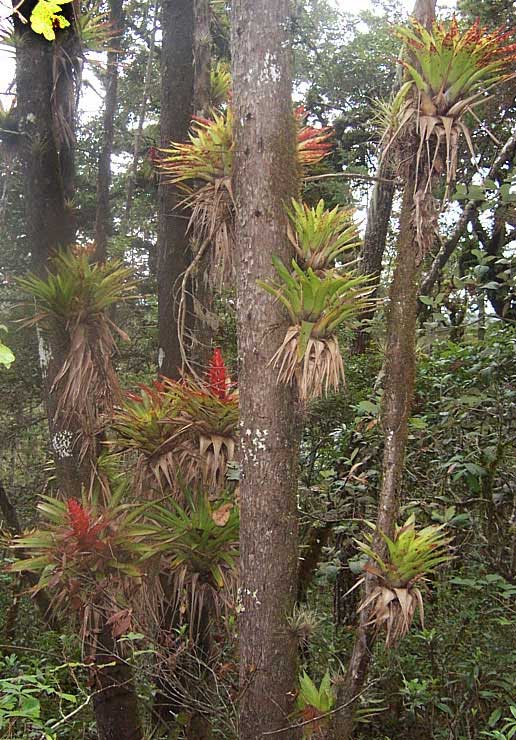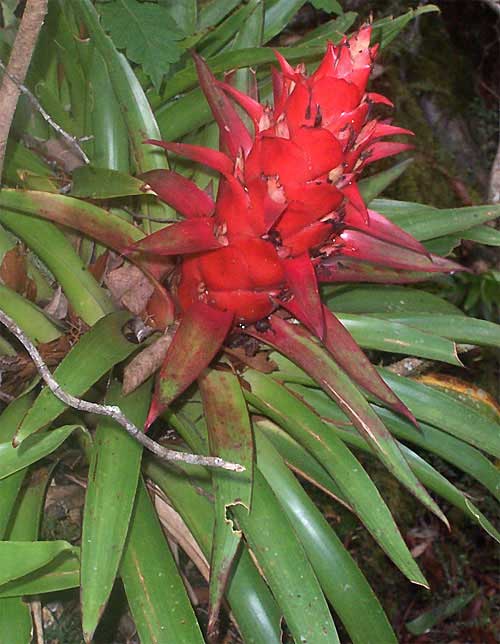Excerpts from Jim Conrad's
Naturalist Newsletter
from the July 6, 2007 Newsletter issued from Sierra Gorda Biosphere Reserve, QUERÉTARO, MÉXICO
AWAKENING IN A CLOUDFOREST
It was quite nice awakening last Sunday morning in a cloudforest. Despite the fact that it'd rained all night and was raining then, and that the air was fairly chilly, in the upper 50s, inside my sleeping bag I was dry, almost toasty. I lay with one edge of my tent's door-flap peeled back so I could watch the forest as daylight arrived.
Of course I knew what to expect with the coming of light because I'd seen it the previous evening -- avalanches of fog moving among trees heavy with dangling moss and lichens, and with basketball-sized bromeliads perched on tree trunks.
Still, that morning I was surprised by how those big bromeliads, TILLANDSIA IMPERIALIS, looked so congenial on their perches out in the fog and drizzle, somehow looking as cozy as I felt. As the light increased, the bromeliads' red centers started showing up like glowing embers in a nest. When the rain finally ended and the cloud-fog quit rushing around me, but it was still so dark that the flash on my camera went off, I took a picture of a gracious little bromeliad group next to my tent, and maybe you'll sense their affability, too. That picture is below:

Later I found a Tillandsia imperialis that'd fallen from a tree -- it happens a lot, whole limbs often breaking off with them -- and now it looked healthy enough growing atop a rock, as shown below:

In that photograph you can clearly see that the red parts aren't flowers, but rather modified leaves, called bracts. At the bases of the shorter, brightest bracts, wedged against the central stalk, the blunt, pink objects are capsular fruits. The flowers already have been pollinated, shriveled, and fallen away.
For the cloudforest to be so chilly and void of pools and streams, there sure was a lot of mosquitoes. I'll bet that most or all of them spent their aquatic larval "wiggletail" stage in pools of water collected in the Tillandsias' scooplike leaf bases. More mysterious to me is what all those mosquitoes suck their blood from. I saw a Gray Squirrel and birds, but nothing else, though of course most mammals there are nocturnal.